order histories, retained contact details for faster checkout, review submissions, and special promotions.
Forgot password?
order histories, retained contact details for faster checkout, review submissions, and special promotions.
Location
Corporate Headquarters
Vector Laboratories, Inc.
6737 Mowry Ave
Newark, CA 94560
United States
Telephone Numbers
Customer Service: (800) 227-6666 / (650) 697-3600
Contact Us
Additional Contact Details
order histories, retained contact details for faster checkout, review submissions, and special promotions.
Forgot password?
order histories, retained contact details for faster checkout, review submissions, and special promotions.
MYC / c-Myc
v-myc avian myelocytomatosis viral oncogene homolog
MYC / c-Myc is a multifunctional, nuclear phosphoprotein that plays a role in cell cycle progression, apoptosis and cellular transformation. It functions as a transcription factor that regulates transcription of specific target genes. Mutations, overexpression, rearrangement and translocation of this gene have been associated with a variety of hematopoietic tumors, leukemias and lymphomas, including Burkitt lymphoma. There is evidence to show that alternative translation initiations from an upstream, in-frame non-AUG (CUG) and a downstream AUG start site result in the production of two isoforms with distinct N-termini. The synthesis of non-AUG initiated protein is suppressed in Burkitt's lymphomas, suggesting its importance in the normal function of this gene.
| Gene Name: | v-myc avian myelocytomatosis viral oncogene homolog |
| Synonyms: | MYC, BHLHe39, C-Myc, MRTL, Myc proto-oncogene protein, Proto-oncogene c-Myc, Rats1, Transcription factor p64, v-myc |
| Target Sequences: | NM_002467 NP_002458.2 P01106 |
Publications (25)
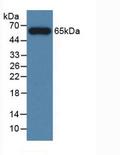
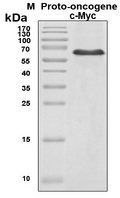

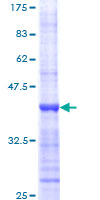

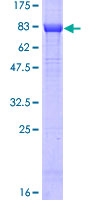
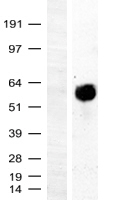



If you do not find the reagent or information you require, please contact Customer.Support@LSBio.com to inquire about additional products in development.










